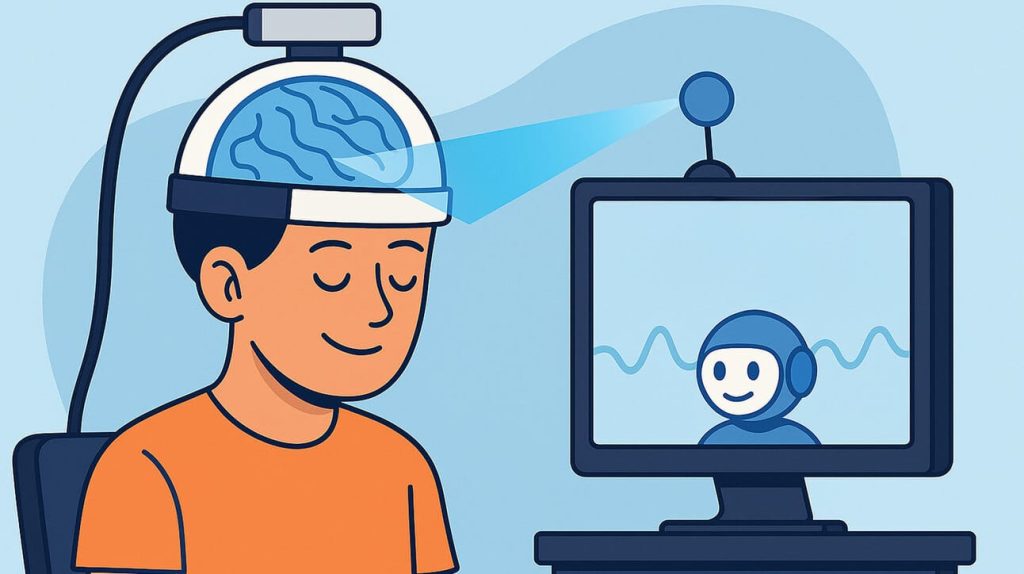A Swedish School’s Experiment with Neural Enhancement
In recent years, brain-computer interfaces (BCIs) have shifted from speculative tech to tangible tools impacting human cognition. One of the most striking real-world experiments occurred in 2025 at a progressive school in Sweden, where a Neuralink competitor’s non-invasive BCI device was piloted to improve student focus and learning efficiency. The device, worn as a lightweight headband, monitored brain activity and delivered mild electrical stimulation to enhance concentration during lessons and exams. Early feedback was promising: teachers reported noticeable improvements in attention spans, particularly among students who historically struggled with distraction.
The pilot sparked widespread media attention and polarized public opinion. Supporters hailed the technology as a breakthrough that could democratize cognitive enhancement, leveling the playing field for neurodivergent students and those with attention deficits. Critics worried about the ethics of neuro-enhancement in children and the potential for deepening educational inequality. The Swedish education ministry announced plans to expand the study while emphasizing the need for strict ethical guidelines.
This case illustrates a microcosm of the larger conversation around BCIs in education. Technologies that can boost cognitive abilities in real-time could revolutionize learning—if they are accessible to all. But accessibility remains the key challenge.
The Ethical Dilemma of Cognitive Enhancement and Socioeconomic Gaps
As BCI technology matures, it is increasingly clear that such devices will not be distributed evenly across societies. In wealthier families, early adopters are already investing in home-use BCI headsets marketed for attention enhancement, memory training, and mood regulation. These devices, ranging from $1,000 to $3,000, are prohibitively expensive for most families globally.
This disparity raises urgent ethical concerns about a potential “neuro-divide,” where children from affluent backgrounds gain amplified cognitive abilities that their less privileged peers cannot access. Such a divide could exacerbate existing educational inequalities, not merely in resources or teacher quality but fundamentally in mental capacity and processing speed.
Educational psychologists caution that while BCI can provide short-term cognitive boosts, the long-term societal consequences may include stigmatization of students without access to enhancement, pressure on schools to adopt technology at the risk of marginalizing disadvantaged groups, and a shift in meritocracy toward neuro-enhanced performance. Parents and educators alike grapple with questions: Should cognitive enhancement be considered a form of cheating? Could natural intelligence be devalued? Where should lines be drawn to ensure fairness?
There is also the risk that cognitive enhancement technologies could inadvertently entrench existing social hierarchies, rather than dismantle them. This would transform education from a tool of opportunity to a battleground for “neuro-privilege,” where success increasingly depends on one’s ability to afford neural augmentation.

Regulatory Responses: The European Union’s Precautionary Approach
In response to these growing concerns, the European Union moved swiftly in 2025 to address the regulatory vacuum surrounding BCIs in education and consumer use. After several high-profile debates involving neuroscientists, ethicists, educators, and civil rights advocates, the EU enacted emergency legislation restricting commercial BCI applications in minors without explicit medical need.
The new regulations require companies marketing BCI devices for cognitive enhancement to demonstrate rigorous safety and efficacy data and mandate parental consent and government oversight. The legislation also prohibits the use of BCIs in standardized testing or any context where neuro-enhancement could confer unfair academic advantage.
Critics argue that the regulations, while necessary, might slow down innovation and limit access to potentially beneficial technologies. Industry groups warn that overregulation could push BCI development underground or offshore, reducing transparency. However, advocates emphasize that these measures are critical to preventing a societal split based on neurological augmentation before the technology becomes widespread.
Beyond Europe, several countries have initiated similar discussions, with some Asian and North American governments setting up task forces to evaluate ethical frameworks and establish international standards. There is growing recognition that BCI governance cannot be left solely to market forces—global cooperation will be essential to address the “neuro-divide” risk effectively.
Looking Ahead: Balancing Innovation with Equity in Neurotechnology
The intersection of education and brain-computer interfaces presents one of the most complex social challenges of our time. The potential benefits of BCIs in enhancing learning, mental health, and cognitive rehabilitation are enormous. Yet, without deliberate policies to ensure equitable access, these benefits risk being enjoyed by only a privileged few.
Experts propose several strategies to mitigate the neuro-divide. Public investment in school-based BCI programs could democratize access and provide valuable data on long-term effects. Open-source neurotechnology initiatives might lower costs and foster innovation outside commercial pressures. Ethical guidelines co-created with students, parents, and educators could shape socially acceptable norms for cognitive enhancement.
Moreover, research into the psychological and social impacts of BCIs in educational settings must keep pace with technological advances. Questions about identity, consent, and the definition of “normal” cognition require ongoing dialogue. Education itself might need to evolve, recognizing that learning can be augmented by technology without losing sight of human creativity, critical thinking, and emotional intelligence.
The Swedish pilot project and EU legislation mark critical early steps in navigating this brave new world. They underscore that brain-computer interfaces are not just tools but catalysts for fundamental shifts in how society values intelligence, fairness, and opportunity.
As we move toward a future where thought itself can be enhanced or mediated by machines, the challenge will be to ensure that technology empowers all learners, not just the privileged few—closing the neuro-divide rather than widening it.


















































Discussion about this post